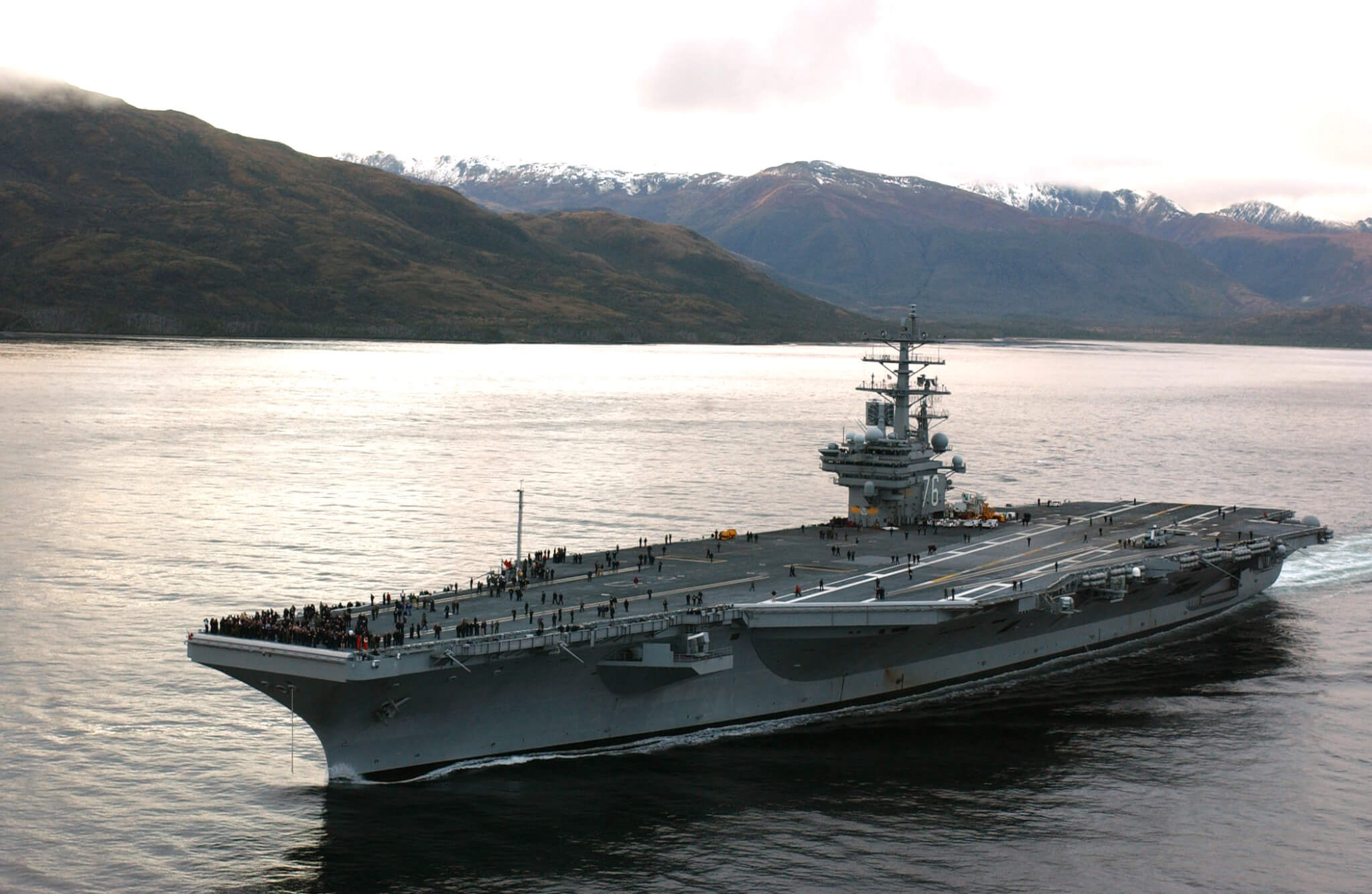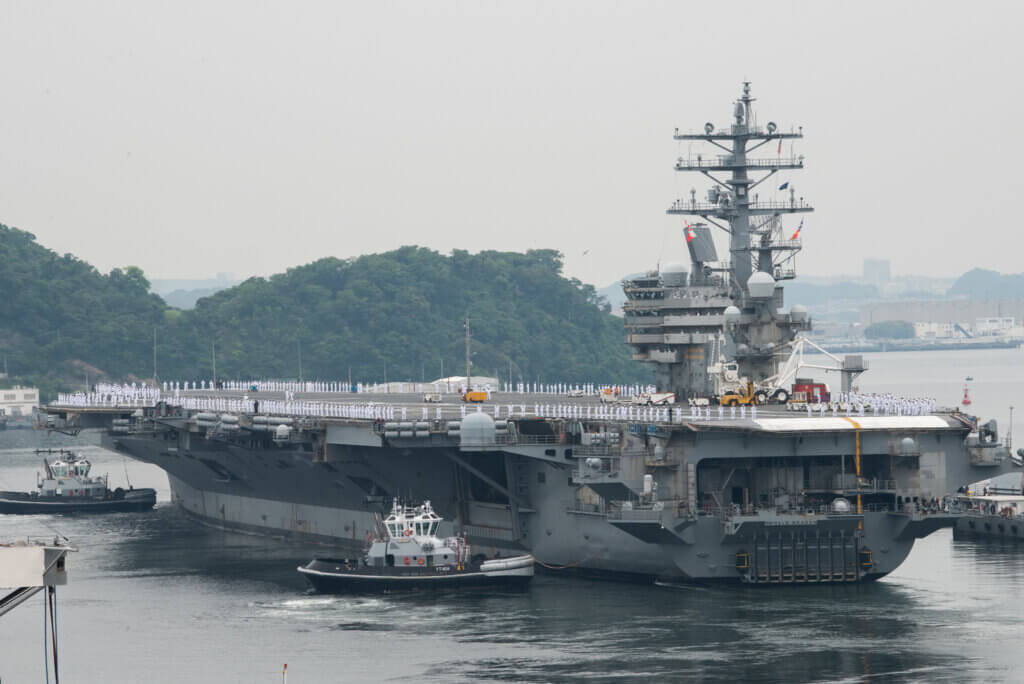
USS Ronald Reagan (CVN 76)
Defending Allies: USS Ronald Reagan’s Mission to Secure the Philippine Sea Amid Rising Tensions

Recent injuries inflicted on Filipino fishermen by Chinese forces in the shoals underscore the increasing tensions in the Philippine Sea. As these events unfold, the U.S. Navy’s forward-deployed carrier, the USS Ronald Reagan, plays a crucial role in maintaining regional stability and providing a deterrent against potential Chinese aggression.
The Strategic Importance of the USS Ronald Reagan
The USS Ronald Reagan, stationed in the Pacific, is undergoing resupply and refueling to extend its deterrence missions in the Philippine Sea. This action highlights the Pentagon’s commitment to a continued forward presence amid the escalating U.S.-China tensions. The strategic placement of the Reagan ensures that the U.S. can project significant air attack power throughout the region, protecting allies like the Philippines from potential threats.
The Threat of a “Fait Accompli” Scenario
A significant concern is the possibility of a “fait accompli” scenario, where China might quickly annex the Philippines or Taiwan before an allied response can be mobilized. This scenario is particularly worrying given China’s ongoing military maneuvers and blockades of small Philippine fishing boats. Kris Osborn noted, “Operating as a floating city with thousands of sailors and hundreds of attack planes and helicopters, the USS Ronald Reagan is likely having its deployment extended to ensure critical ‘proximity’.”
U.S. Support for the Philippines
The United States stands with its ally the Philippines and condemns the escalatory and irresponsible actions by the People’s Republic of China (PRC) to deny the Philippines from lawfully delivering humanitarian supplies to service members stationed at the BRP Sierra Madre. Department Spokesperson Matthew Miller stated, “PRC vessels’ dangerous and deliberate use of water cannons, ramming, blocking maneuvers, and towing damaged Philippine vessels endangered the lives of Philippine service members, is reckless, and threatens regional peace and stability.”
The U.S. reaffirms that Article IV of the 1951 United States-Philippines Mutual Defense Treaty extends to armed attacks on Philippine armed forces, public vessels, or aircraft – including those of its Coast Guard – anywhere in the South China Sea. Miller reiterated, “The United States reaffirms that Article IV of the 1951 United States-Philippines Mutual Defense Treaty extends to armed attacks on Philippine armed forces, public vessels, or aircraft – including those of its Coast Guard – anywhere in the South China Sea.”
The Role of Carrier Strike Groups
The Reagan’s ability to deploy 5th-generation aircraft within striking distance of Chinese forces is a key element of the U.S. defense strategy. These aircraft can achieve air supremacy, significantly reducing the effectiveness of any Chinese military operation. The presence of the Reagan also ensures that the U.S. can quickly respond to any sudden moves by China, maintaining a balance of power in the region. Derek Grossman emphasized, “Manila is pressing forward with three other efforts… deepening its alliance with Washington, forging ahead on security drills and agreements with other countries in the region, and adopting a strategy of ‘assertive transparency’ toward Chinese encroachments.”
Commentary
As the founder of Americans for a Stronger Navy, I believe in peace and peace through strength. Diplomacy is essential, but there comes a time when we must draw a line in the sand and take action. I firmly believe that China will continue its aggression and other nefarious deeds until it is stopped. If they want war, then they better be prepared for one. It is crucial for the American public to engage and support the Navy. Internal conflict among ourselves only plays into the hands of our adversaries, which is a tactic straight out of the communist handbook.
Conclusion
The extended deployment of the USS Ronald Reagan in the Philippine Sea is a clear signal of the U.S. commitment to defending its allies and maintaining stability in the region. As tensions continue to rise, the Reagan’s presence is more critical than ever in preventing a potential crisis and ensuring the security of the Philippines.
By reinforcing our naval capabilities and maintaining a robust presence, we can deter aggression and protect the freedoms and security of our allies in the Indo-Pacific region. The injuries sustained by Filipino fishermen and the aggressive actions against the BRP Sierra Madre remind us of the real and present threats posed by Chinese expansionism, and underscore the necessity of a strong and ready U.S. Navy.
Sources:
- Osborn, K. (2024, June 17). Defending the Philippines? USS Ronald Reagan Re-Supplied & Extended in Philippine Sea. Warrior Maven.
- Miller, M. (2024, June 17). U.S. Support for the Philippines in the South China Sea. U.S. State Department.
- Grossman, D. (2024, May 29). How to Respond to China’s Tactics in the South China Sea. Foreign Policy.


